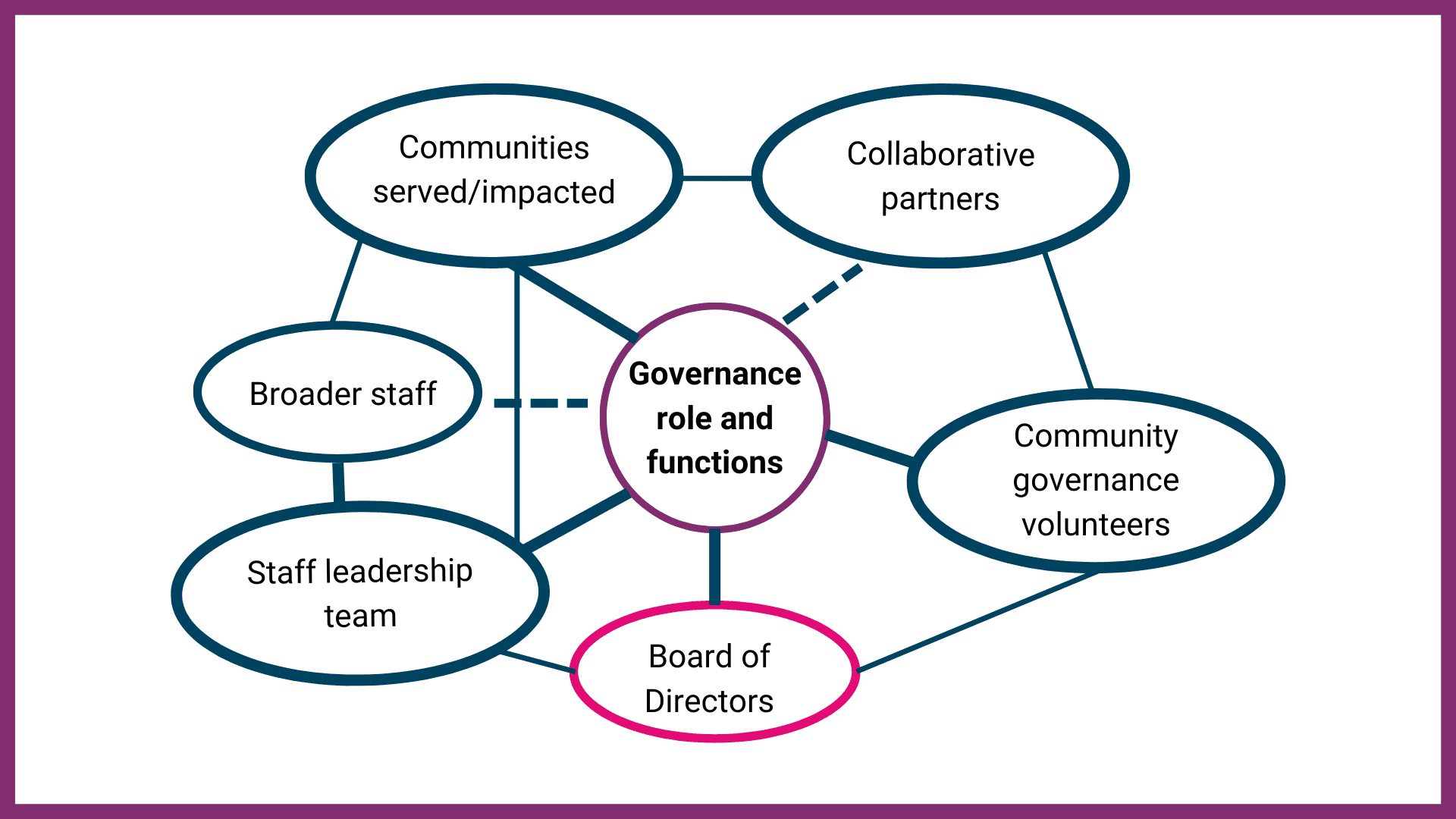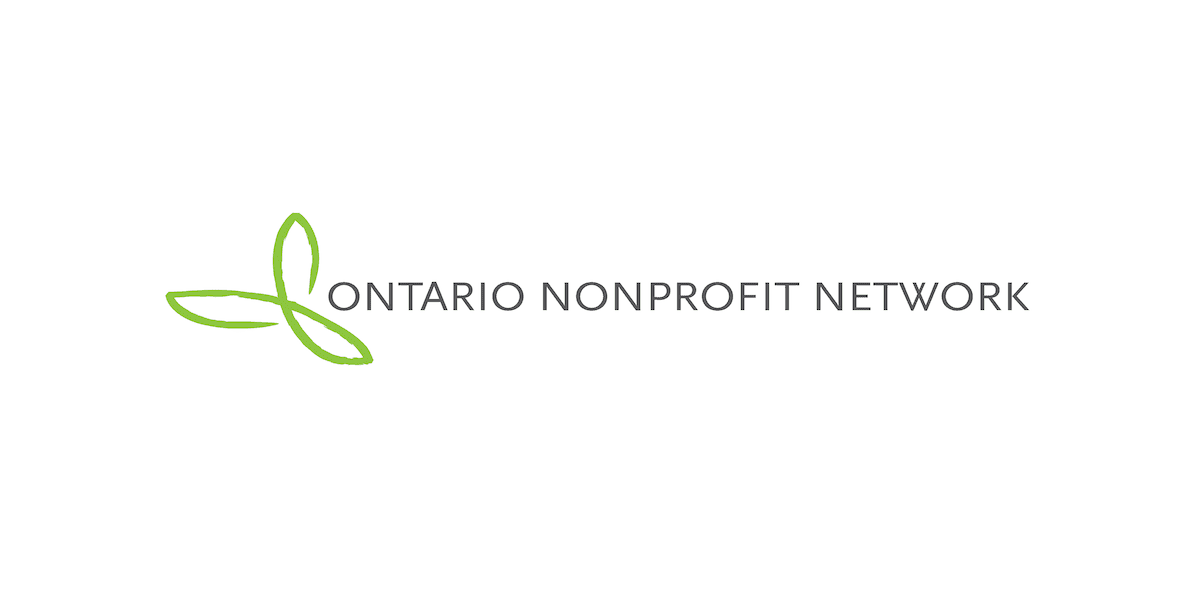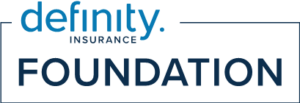Four lessons learned about governance innovation
Embracing messiness, discomfort, and ambiguity

A big thing that often gets in the way of embarking on change work – like reimagining how nonprofit organizations think about and do governance – is the sheer messiness of it all. Discomfort, or even dread, is common when we confront change or try something new. Add in a sense of ambiguity about how things may unfold, along with the unpredictable and complex environments that nonprofits operate in, and it’s enough to make you want to double-down on the safety of the status quo. After all, it’s so much easier not to change.
Yet the messiness, discomfort, and ambiguity are the magic sauce that enables innovative thinking to happen. So how can your organization bring about governance innovation, and why should you do it?
Reimagining Governance has sparked innovation in governance by provoking a shift in how it’s thought about and done. There is a real opportunity to get away from fixing immediate problems, and align governance better with our current realities. When we dove into a series of Learning Labs, working alongside a variety of nonprofit organizations and their boards to experiment and co-create our processes and tools, it really challenged us to lean into the discomfort that comes from creating something new. It also surfaced some key conditions for innovation to thrive.
Here’s what we learned together:
1. Create a clear, shared understanding of what you mean by ‘innovation’
‘Innovation’ is one of those words that is so overused, that its meaning has become flattened and can sometimes serve as a barrier to change. There is no single definition of innovation that will resonate with everyone, but each organization can shape it to align it with their unique circumstances.
Innovation could look like:
- A small shift which makes a big difference (e.g. moving away from having formal, fixed governance committees and trying more agile ways to convene people around specific tasks, like strategic visioning);
- Incremental changes over time that shift power dynamics and accountabilities (e.g. being intentional about articulating the values that influence governance work, which results in new approaches to how decisions are made);
- Full shake-up or transformation of how governance work is done in the organization (e.g. shifting from a more rigid, hierarchical structure towards a broader network of governance decision-makers).
2. Normalize messiness as a key ingredient to change-work
The conditions for innovation actually need messiness to prompt the breakthroughs and shifts in thinking that spark new ideas, causing us to grow, stretch, and dream bigger. Innovation work calls on us to reflect on and name what we think, and how we approach relationships and decision-making. That’s going to get messy!
Organizations that participated in our Learning Labs were confronted with lots of messiness – there were many times when people threw up their arms asking, “Where are we going with this?” There was a hunger to return to the comfort zone of tactics and action steps. But people persevered. At a final session for their team, one person remarked, “[This] changed my thinking. I’m a tangible thinker, so this has been uncomfortable for me but I am a better person and hopefully a better chair.”
Some things that can help with navigating the messiness:
- Take the time to get a shared sense of the outcomes you want to achieve – the purpose and broad direction. This will become the guiding star for the board and management team throughout your journey. Avoid getting into the “how you’ll do it,” until you’ve decided why you’re doing it.
- Allocate enough time in your journey to reflect, challenge, debate, and deepen understanding. Finding new ways of doing governance work can’t be rushed, and it needs collective ownership to be sustainable. People will have different relationships with the messiness of innovation. It can be helpful for a small group of people who are more comfortable with ambiguity and chaos to help champion the upfront work, while looping the rest of the team in along the way.
- If the majority of people feel high levels of discomfort in engaging with this work, it may be time to pause and think about team readiness. For example, it can be helpful to invest in trust and relationship-building by providing more information and allowing for dialogue before embarking on this work.
3. Let go of old habits and deeply held assumptions about governance
When we’re surrounded by what we already know, we feel safe. But staying safe doesn’t lead to new ideas or ways of working. As Vu Le described it, “So many of the things that we do are done a certain way because that’s just how someone else told us things should be done.”
It’s important to challenge the status quo by uncovering the assumptions, beliefs, or mindsets that fuel our perspectives of how governance must or should be done. This requires an ongoing practice of asking brave questions, examining where our beliefs come from, and consistent reframing so you don’t just keep arriving at the same kinds of solutions. Once that’s done, it’s important to practice letting go of the assumptions and habits that aren’t true or don’t make sense anymore. Intentionally naming and reframing things like this allowed teams to discover opportunities that they may not have if they simply stayed the course.
Here are some examples of assumptions and habits that the Learning Lab organizations let go of and, reframed:
Example 1: An organization had the habit of connecting with its stakeholders through a fixed, formal structure that had been around for decades. By examining their unique circumstances and context, they realized that the landscape has significantly changed; they serve different communities and stakeholders with different needs. This realization prompted a shift in thinking that allowed the organization to think about engaging diverse stakeholders in a more timely and agile way. For example, instead of formal committees, creating opportunities to form around specific issues (like strategic visioning) and then disperse.
Example 2: There was a perception that the board has to do all the work of governance. But board members were feeling overwhelmed by the amount of work, particularly as volunteers. By reframing that assumption, they started thinking about the board as the ‘home’ of governance as it relates to its legal regulatory responsibilities, but the ‘host’ of other governance functions that could be delegated and shared with other key stakeholders.
Example 3: An organization’s board was comprised of specific stakeholder groups, which was thought to be the best way to represent their voices in governance. However, it was noted that this approach was tokenistic and made it challenging to recruit for the skills, knowledge, mindsets, and lived experiences that their board work demanded. By re-focusing their board recruitment on attaining those key characteristics, it opened up space to explore creating different engagement strategies to give meaningful voice to the diversity of their stakeholders, based on their unique interests.
4. Create the conditions that work best for your organization
Engaging in deep conversations around complex and intangible topics is challenging enough without the additional difficulties of a global pandemic. But there are never “perfect conditions”, and it could be argued that an environment of rapid change and adaptation is actually ripe for innovation in governance. Why wait?
Here are some things we learned about creating conditions for success:.
- People need permission to have open, honest, challenging conversations and to experiment, which requires an environment of trust. Otherwise, it’s easy to fall back into group-think or what is “tried and true”.
- Get away from your normal routines and seek out spaces and practices that spark inspiration. For example, use collaborative whiteboard tools to brainstorm and draw together, or ask questions like “Why do we think that?” or “What could be possible if we did things this way?”.
- Beware of falling into the trap of “we’re broken and need fixing”. Reimagining governance is exciting because it’s about grabbing hold of the opportunity to create better ways of doing governance.
- Timing is key. If your organization is facing some crisis or choppy waters, you probably don’t have the capacity to take risks.
Carrying the lessons forward
The Learning Labs gifted us with a key affirmation: there is a tremendous opportunity and space to innovate how governance work is done. What could be possible for our collective futures if we did reimagine governance? What’s at stake if we don’t? In the coming weeks we’ll be sharing two more blog posts that dive deeper into some of the lessons we shared here, and highlighting some stories from inside the Learning Labs.
Reimagining governance is important and timely work. Nonprofits are operating in increasingly complex environments, navigating a HR crisis, and deeply questioning how to go beyond diversity and inclusion to meaningfully ground governance work in equity and anti-oppression. This makes the questions of who makes decisions, how decisions are made, and who is ultimately accountable even more critical to examine – and exciting to reimagine.
Explore related reports and resources:
- Map your governance through a wider lens of a complex system. This framework will help you to better understand all the influencers that shape your governance design and to visualize each of the components of governance so they can be put back together creatively.
- Board Essentials kick-starts a conversation about how to share governance decision-making more broadly, enabling more voices to be included. It identifies the responsibilities that must be met by the board based on the legal and regulatory requirements so there is a clearer understanding about what can be shared or delegated, and what can be done by others.
- Impacts on Governance Design is new research describing eleven broad trends and forces in the nonprofit sector and how they converge to create six critical impacts on governance design. This resource can be used to identify how your governance design has been, or could be, shaped by these impacts.
- Check out our past blog post, Equity, Power, and the Future of the Nonprofit Sector
- Learn more about the initiative by visiting our webpage
- Stay in the loop by joining our Reimagining Governance listserv
By Erin Kang and Linda Mollenhauer
This blog post is the first in a three-part series that will highlight learnings from ONN’s Reimagining Governance, a collaborative initiative with Ignite NPS. Following this series, we will be launching a virtual space for people to explore innovative approaches to governance in the nonprofit sector. Stay connected and receive updates by joining the Reimagining Governance listserv.









